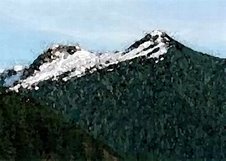When you only hear about a country in one type of context, it's easy to forget about the other facets of that nation. The words 'Iran' and 'nuclear' often appear in the same sentence, but what about Iran's early history as the center of the Persian empire? How many of us are aware that Afghanistan, which has suffered decades of destruction, was once home to ancient nomadic tribe whose rulers dripped with gold?
A History of Iran by Michael Axworthy, looks at Iran's evolution from Persian capital to Turkish conquest, it's reassertion of control, the influence of Westernized leaders, and its recent anti-Western revolution. Axworthy looks at the various cultural and political movements and the effect that these changes have had on the group psyche and identity of the Iranian people. It's very difficult to understand, assess or appreciate someone if you don't know their background and history. Since Iran is obviously going to play a prominent role in American foreign policy in the coming decades, it seems an auspicious time to get to know the Iranian people better.
In 1979, just before the Soviets invaded Afghanistan, archaeologists working in the Northern Plains of Afghanistan discovered a treasure trove: tombs of nomadic Bactrian nobles, containing thousands of pieces of carefully worked gold. Hurriedly hidden away during the conflict, the Bactrian Horde (as it has come to be known) has been kept safe from invading armies, tribal brigands and the Taliban for three decades. It has now resurfaced and the National Museum in Kabul has allowed the artifacts to tour the United States (the exhibit - organized by the National Geographic Society and the National Gallery of Art - will be at the Asian Art Museum of San Francisco from Oct. 24 - Jan. 25). Afghanistan: hidden treasures from the National Museum, Kabul is the official companion guide to the exhibition. Edited by Fredrik Hiebert and Pierre Cambon, this fascinating book contains page after page of beautiful artwork: statues, bowls, earrings, carvings, medallions and furniture. These pieces reflect the influence of Greek, Persian and Indian incursions into the area of Afghanistan. A beautiful book and a very interesting story...
Saturday, October 11, 2008
Subscribe to:
Post Comments (Atom)

No comments:
Post a Comment